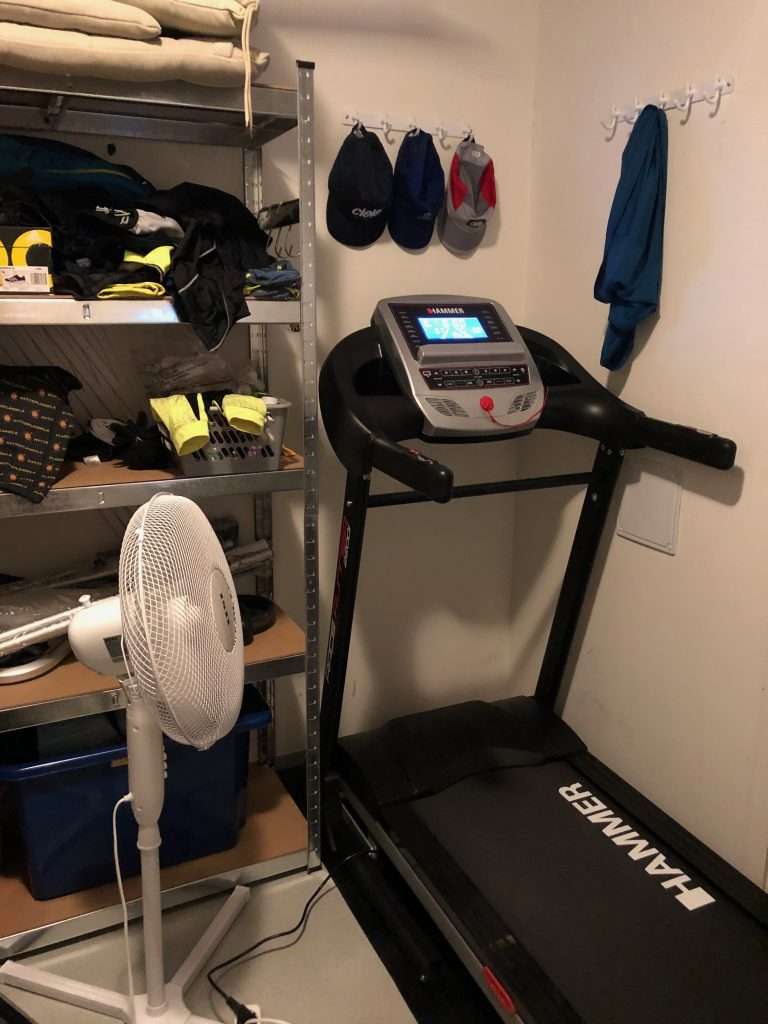Half a year has passed since I ran the Berlin Marathon. It is safe to say that my running has not gone according to plan through these six months. The hopes of building my fitness to new levels and chasing new personal bests in 2020 have evaporated. Instead, I’ve been working on returning from injury and getting back to full fitness.
Post-Marathon Recovery
After missing my goal, but still setting a convincing new personal best in the Berlin Marathon, I embarked on a careful rebuild. The first week after the race, I only went for a few leisurely bike rides.
Only after a full week off, did I start adding back some easy runs. And over the following four weeks, I deliberately held back on doing too much, too soon. Weeks two and three post-marathon consisted of only easy runs.
In the fourth week after the marathon, I did close to 50% of my typical weekly mileage. This week also included some strides and a slightly faster run. By week five, my legs were coming back. I got through my first real workout after the race, and even added in some hill repetitions.
I was feeling good and was excited to get started with the training I had planned for the coming months. The roads were my playground, and 2020 was going to be my year.
I didn’t limit myself to thinking only about personal bests. With a solid winter of training, I could undoubtedly become strong enough to compete for a podium finish in some local races. At one point, I was even bemused at how easy this running thing was. All I had to do was to put in the work, and success would inevitably follow.
An Untimely Health Scare
Pride goes before a fall, as the saying goes. The following week, my running came to an abrupt end. Out for an easy recovery run, I experienced severe pain in the chest and upper abdomen. All I could do was walk home, and even that felt touch and go.
The next day my doctor confirmed that I had suffered some internal bleeding, and I was under strict orders not to run until they knew what had caused it. A few weeks of various tests followed, while I restlessly avoided running. Mostly, anyway.
After three weeks of no running, and no conclusive answers about the slightly scary experience, I got the all-clear to start exercising lightly again. Three weeks of lost training is nothing, I told myself and was anxious to get back to it.
Injury Strikes Again
I picked my training back up again cautiously, careful not to overdo it. But the calendar was now showing December, and winter had arrived. Cold weather and running on snow had caused me trouble before, as I spent the first few months of 2019 sidelined with an injury to my right knee.
As a result, I probably should have picked up on the irritation that now developed in my left knee sooner than I did. But, alas, I’m just a runner who wanted to run.
I spent the rest of December trying to establish a baseline for what my now clearly injured left knee could handle. While I could run without much trouble, my knee would tighten up and become stiff and painful after any run lasting longer than 30-40 minutes.
Reacquainting myself with the elliptical machine was inevitable in an attempt to stem the tide of fitness loss. By the time the new year rolled around, I was still not able to run much further than 30 minutes at an easy pace without feeling significant pain.
A Last Ditch Attempt
I once read something to the effect of some load injuries can be cured by increasing the load. Supposedly, this serves as a different stimulus, and the body responds by changing or even “fixing” what is causing pain.
I don’t know where I read it, but, in my desperation, the source didn’t matter. The logic seemed sound, and it gave me a perfect excuse to ramp up my training just in time for a spring marathon training block.
We’ve all heard this story before, but I’ll give you an executive summary. I ran with pain in the knee for two weeks, topping out at around 80 kilometres / 50 miles the second week. For reference, that is just shy of 70% of my average mileage in the months leading up to the Berlin Marathon.
Following a “long” run of 23 kilometres at a moderate pace to end that week, I was struggling to walk normally the next day. I stubbornly insisted on seeing if I could “run it off” but had to limp back home after 500 metres. It finally dawned on me that I was in no shape to keep running.
The Slow Rebuild
After reluctantly accepting the obvious fact that the 2020 spring racing season would happen without me, I spent a couple of days in a foul mood. However, feeling sorry for myself wouldn’t get me back into shape.
Instead, I sat down and created a six-week plan to get back into training. But, this time I was going to be smart about it. Instead of training the way I felt entitled to (because anything else would just be too unfair), I landed on a more systematic approach. As Peter Bromka says, The Marathon doesn’t owe you anything.
I would fall back to the guidelines offered to me by the physiotherapist I saw last year when I had the same problems in my other knee. That meant everything that caused pain beyond three on a scale from one to ten was OK. The tricky part is anticipating the level of pain that sets on after training. But over the last couple of months, I had gotten to know my condition well enough that I could predict it well enough.
The weeks passed, and I slowly switched out my sessions on the elliptical for runs on the treadmill. My progress was slower than I had hoped, however, and I realised that there was no quick fix to get me out of this mess with my knee still intact.
My Current Situation
All hope is not lost, however. At the time of writing, I am on course for my second straight 80 km / 50 mile week. I have gotten through some decent threshold workouts, and I can get through my 90 minute long runs at a fair intensity.
The catch? I can still barely run outside without aggravating the knee. Running on a treadmill is fine, and the knee handles whatever I throw at it. Running outside, however, even a 40-minute recovery run will bring back that old, familiar tension in the knee.

With everything that is going on in the world, I am just content with the fact that I can train at a level that I know will increase my fitness. In a stroke of luck, I also decided a purchase a home treadmill just before the onset of the coronavirus pandemic. With the authorities mandating a nationwide shut down of all public gyms for at least a month, I can only breathe a sigh of relief that I still have access to a treadmill.
I don’t know when the current situation will settle down, and races will get back on schedule. I hope that once that happens, I will be ready to race again. Until then, I’ll try to be smart about my running and diligent about my strength and conditioning work.
Like this?
Let me know by sending me an email at lc@run161.com.
